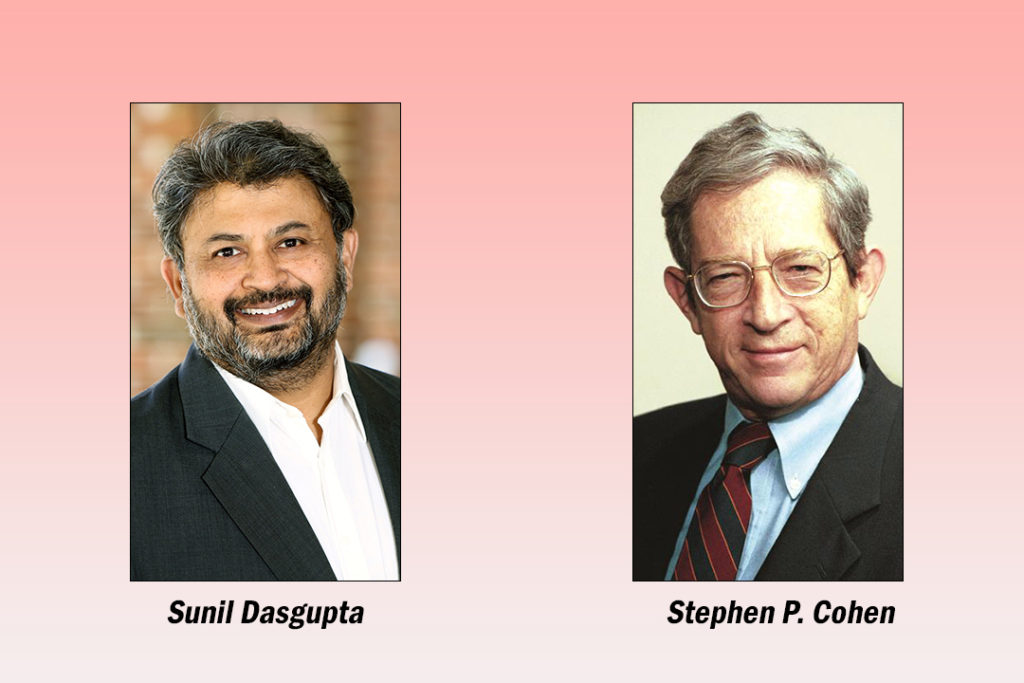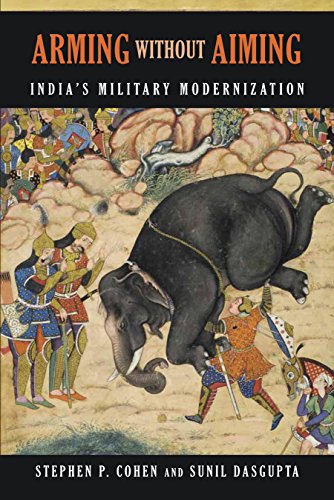South Asian environment inherited in Indo-Pak toxic diplomatic interaction has always remained a source of interaction for the international community. Conventional asymmetry based on inflexible national behaviour of New Delhi and Islamabad has resulted in a disturbed regional political setting of South Asia. the Kashmir issue coupled with various points of disagreements of the governments of Islamabad and New Delhi has given birth to an unending arms race in the region. Now the nuclearized subcontinent has become a central point of discussion in global societies. The debate on Indo-Pak relations cannot be completed without reading the work of Stephen P. Cohen. The Washington based Brooking Institution is a non-profit public policy organization which engages Cohen in The India Project under its larger Foreign Policy program. In 2004, Cohen stood prominently among “America’s 500 Most Influential People” while proving his expertise in the area of foreign policy. Moreover, he has given his scholarly insight in more than fourteen books. His areas of work covers mainly the domains of nuclear politics, terrorism, and disaster management.
The book under review “Arming Without Aiming: India’s Military Modernization” is purely the study of Indian military modernization which Cohen co-authors with Sunil Dasgupta, a non-resident senior fellow on the India Project of Foreign Policy program at Brooking. Dasgupta, a director of the University of Maryland-Baltimore Country’s Political Science Program at the Universities at Shady Grove was a senior correspondent of India Today for five years. His main studies cover the areas of security, military organization and insurgency. The combined work of Cohen and Dasgupta is purely a reading of India’s constantly swelling strategic capabilities. It is a significant contribution in the existing literature on Indian arms and the efforts of leading Hindu politicians and policymakers in augmenting the contemporary military growth of India. Both authors endeavour to pinpoint the hurdles in India’s domestic political system for upgradation of obsolete strategic assets. Bribery and corruption are marked as the overwhelming forces in Indian political structure which have affected the strategic domain of the country.
The book contains a combination of eight chapter on different topics with the first chapter starting the debate from the genesis of military modernization in India and ending it in the eighth chapter by discussing the Washington’s role in strengthening of New Delhi’s strategic muscles. The examination of an inevitable connection between affluence and technology starts the discussion in the book. Chapter two provides a brief survey of reform efforts for expanding militaries, creating of new commands, agencies, and strategic positions in Indian armed forces. The third and fourth chapters present an informative account of military, air and naval modernization. The three strings of Indian armed forces cover wide ranges of subjects relevant to threats, doctrines and equipment under New Delhi’s strategic rubric. An interesting portion of the book comes in the fifth chapter which exclusively talks about India’s nuclear journey. In order to counter multiplying insurgencies, the mainstream Hindu leadership has designed countless initiatives which is the main point of discussion in the sixth chapter. The second last chapter lead the readers toward the concluding remarks by winding up the discussion.

India‘s offensive behaviour cemented in its regional belligerent posture forced leading Hindu policymakers to exclusively focus on weapons advancement. No doubt, both writers have successfully sketched a picture of New Delhi’s emphasis on adopting of a culture of military modernization but the authors remain silent on theoretical domains of New Delhi’s lust for acquiring advanced weapons. Cohen and Dasgupta try to stay away from Kautilyan strings of Indian foreign policy which explicitly dictate the cultivation of friendly relations with the world beyond neighbours while looking with hostility toward territorially adjoining nations. The persuasion of such policy by New Delhi resulted in major wars with neighbouring countries. The wars with Pakistan and China are an overt application of Kautilyan maxims in New Delhi’s foreign policy which sparked an unending thirst of building an advanced military-industrial complex. In this way, the clash over territorial issues with bordering countries generated an idea of nuclear power in Indira Gandhi’s government and she arranged a Peaceful Nuclear Explosion in 1974. The combination of security and prestigious forces persuaded Prime Minister Gandhi toward acquisition of military-oriented nuclear program.
The gravitational point of the book arises from the debates of New Delhi’s efforts for enhancing its strategic relations with great powers without taking care of its impact on regional states of South Asia. It was during the Kennedy administration when American state officials decided to shake hands with Indian counterparts. The diplomatic-cum-strategic interaction of two states flourished by Nehru-Nixon meetings during the Sino-India war over Tibetan border in 1962. Subsequently, the Chinese nuclear explosions and war with Pakistan in 1965 provided a justification to India for attaining nuclear weapon status. In this way, the two South Asian watchers of Brooking try to portray a depiction of Indian constantly increasing strategic muscles in convention and unconventional domains. Moreover, the desire to expand violently its sphere of influence across the territorial and maritime borders has caused a disturbed security environment in Indian Ocean too. Propelled by a desire to dominate the waters of Arabian and South China Seas, New Delhi preferred to push its bordering states towards oceanic politics. How such bellicose behaviour will end or what future such belligerent policies will define remain unaddressed in the book. These questions should be a point of concern for Indian policymakers and the architectures of New Delhi’s national security strategy.
Although the book carries handful information collected from diverse sources on India’s anomalous weaponry growth, but it leave the readers in an ambiguous situation where it is too difficult to decide the target of New Delhi military advancement. The persuasion of two-pronged policy based on economic cooperation and military confrontation for China, and historically standing undecidedly between USSR and US under the pretext of nonalignment status show the absence of an undefined rival state in Indian strategic calculations. A vivid depiction of this argument in the title of the book gives rise to a disturbing question for principal Indian strategists. In the larger South Asian region, the desire to hegemonize the other states creates complications for understating the main idea behind the Indian culture of military modernization. Actually, it is an Indian strategic disorder which led its creators to try and secure the status of a superpower. Such abnormal growth of Indian military strength will eventually jeopardise the security of broader South Asian region.
The work of Cohen and Dasgupta should be of interest to the students of politics and security studies, in addition to main stakeholders of South Asian politics generally and the analysts of Indo-Pak conflict particularly.





